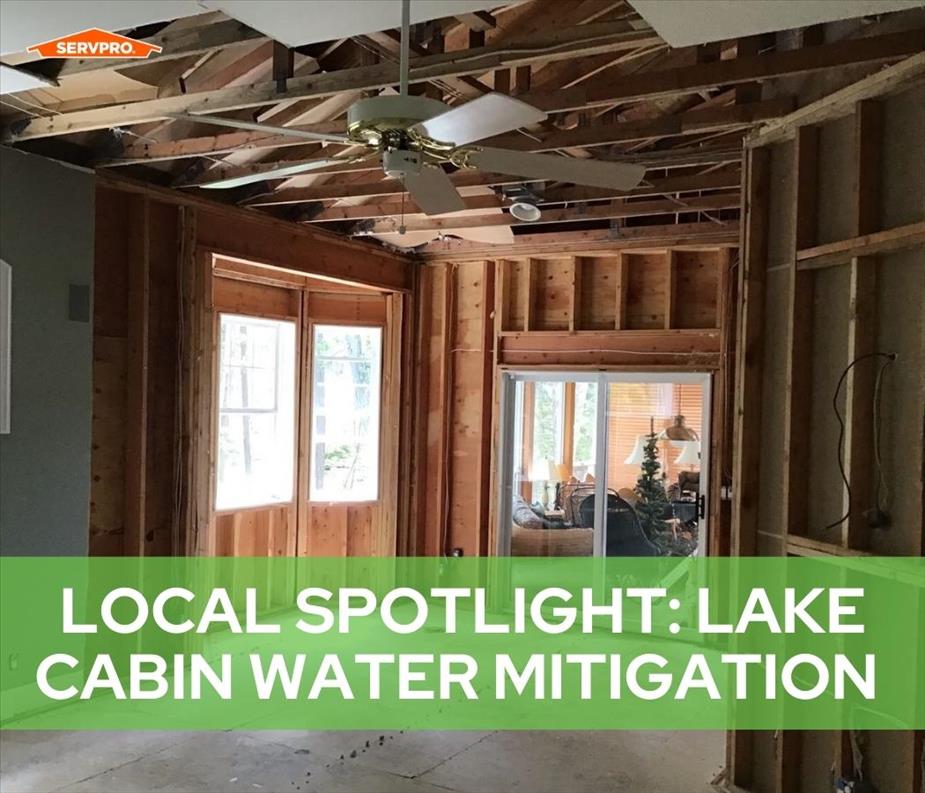Local Spotlight: Lake Cabin Water & Mold Mitigation
7/29/2022 (Permalink)
SERVPRO of Coeur d’Alene has helped numerous local families who face flood, storm, or fire damage to their homes. In one case, we assisted a family who suffered damage to a vacation home.
This family had a lake cabin, which they used only in the summer. Unfortunately, they did not realize that a roofer they had hired to work on the cabin had not done a very thorough job. As a result, when the winter came and snow piled up on the roof, part of the roof collapsed, and as the snow melted, other parts of the roof began to leak. This left the interior of the cabin exposed to weather for months, until the family finally visited their cabin when the weather got better. Not aware of the problem, they arrived to a complete disaster.
The cabin was in bad shape, but in order to salvage what they could of both their possessions and their cabin, SERVPRO of Coeur d’Alene came in to do a dry-out. Typically, a complete dry-out after serious water damage takes about a week, including demolition of the damaged parts of the structure. In this case, because the water had sat for so long allowing the leaks to penetrate into everything, the dry-out took much longer.
Once the dry-out was complete, the family could determine what parts of the structure needed to be demolished and rebuilt. In this case, a lot of the drywall, even after being dried, was rotted out, and the carpets had to go. Only then could the family begin to rebuild.
When it comes to water damage from flooding, storms, or broken or leaking pipes or appliances, the usual course is to follow the following steps:
- Stabilize the situation (tarp the roof, for example) to prevent further damage;
- Set up dehumidifiers, with hepa filters to prevent the spread of any mold;
- Inspect and test contents and structure to develop a plan for demolition, salvage, cleaning, and discarding structural elements and contents;
- Determine what can be salvaged, pack it out for cleaning, discard what cannot be salvaged;
- Mold mitigation;
- Set drying fans after all mold has been removed, so that you do not spread any spores;
- Complete the drying process.
If you have suffered a disaster, whether from water, fire, or weather, contact the professional restoration specialists at SERVPRO of Coeur d’Alene today. Like our motto says, we’ll make it “Like it never even happened.”



 24/7 Emergency Service
24/7 Emergency Service
